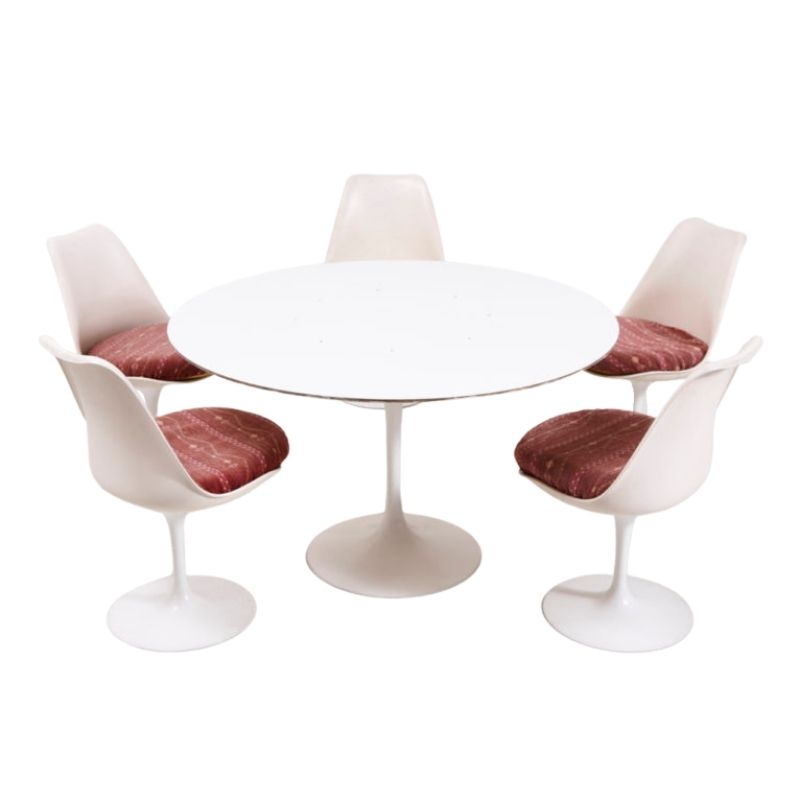Tex, my only hesitation might be the joining of teak and walnut. Not for any technical reason, but purely philosophical and/or aesthetic.
If you've managed to put this off for some reason (goodness knows you wouldn't be the first to to leave a nice board in its as-found state for lack of inspiration), I've got some nice straight-grained ash that might make great legs and all the hand tools necessary to complete something along the lines of what SDR and others have suggested. I'd be happy to lend all to your effort and could easily meet you pretty much anywhere along the central 128 corridor. Just a thought.
They're both native species that would be found growing together in nature. Ash is known for its combination of strength-to-weight and shock resistance. Think baseball bats. And it's a traditional choice. Yes, the fresh-cut color is somewhat wan, but it darkens nicely to what I might describe as a "pumpkin pine" color with prolonged exposure to oxygen and UV. Thos. Moser uses it for legs and spindles on their cherry chairs as did Nakashima, I think.
I experienced that color, in an unused ash prototype -- an exquisite color which I absolutely did not recognize. Not sure that's what's wanted here, color-wise. I wondered if it would survive a finish coat.
Good to know that ash is simpatico with walnut on the ground, as it were. I've had a walnut piece fade to yellow -- perhaps it was an off batch of wood. Ash is a bargain hardwood, and I like its appearance. Does our owner have a lathe -- or do you propose a square or tapered leg ?
Tex should take you up on your generous offer. I would . . . in a heartbeat !
Thanks for all of the input! The slab sat another weekend but this thread has given me inspiration.
I am hesitant on the teak and walnut combination- there is currently a finish on the legs but I will turn it down to untouched wood.
SDR- your design sums up exactly what I have been thinking. I would drill out three, or four holes and drive the teak legs through, then wedge them. The legs are tapered, but making three consistent holes would be difficult. I'm not confident that the legs would all come out equal in length.
tktoo- I'd be happy to take you up on the offer one of these winter weekends. what are the dimensions of the Ash you have roughly? the slab is in 02478.
The center of the heartwood has cracked and created a convex wavy surface. no more than 3/8'' variation. I could also do a nakashima like butterfly joint to prevent it from cracking- though somewhat beyond my ability.
I remember leif saying that its good to have a slab floating. if I drilled the legs through like a dowel, would the slab end up crooked over time and legs would not sit on the floor?
Not if you give it three legs !
My suggestion of three legs is based partly on the asymmetrical form, and partly for the practical purpose of self-leveling.
As for the length of the legs, that's no problem at all: make all the legs long enough, then after assembly adjust the length empirically, by supporting the top at the desired level, mark and measure the legs from the floor surface, invert and cut. (I seem to have a thing about turning tables upside down ! Doctor, is this a psycho-sexual malady of some sort ?)
Note that the legs are held well in from the ends, in my sketch. This is no accident. Think of a bird, or or a vase of flowers, or a small airplane or a Jacques Lipschitz nude: all have floating forms balanced on slender and sometimes stick-like bases. Floating and expansion -- like a tree, or a cloud -- is the desired image . . .
Tex, the pieces of ash I have available are 1 1/4 x 9 1/2 x 40" and 2 1/2 x 2 1/2 x 80". Two of each and all are S4S. The square pieces are laminated 1 1/4 stock. Nicely matched, but there are glue lines running down the center of opposing faces. These are leftovers from some beds I made a dozen years ago. I could mill them to whatever dimensions you want.
I really do agree that tripod legs are the way to go here. Slightly splayed just like SDR's drawing. Your slab is going to move seasonally. Cupping, winding, bowing, you name it. Three points of contact eliminates any issue of rocking. Hell, the legs would only need to be close to the same length.
3/8" out of flat over a what, 10-12" width is a lot for a top surface of a table. A belt sander is the most expedient way to deal with that. With the grain running in so many directions, even a sharp iron in a hand plane would tear out.
Round through-tenons at the tops of the legs would need to be turned, though. What's the capacity of your lathe?
Anyway, I'm out near 495 and 2. I go into Concord/Lincoln regularly.
If you need any help, please contact us at – info@designaddict.com









